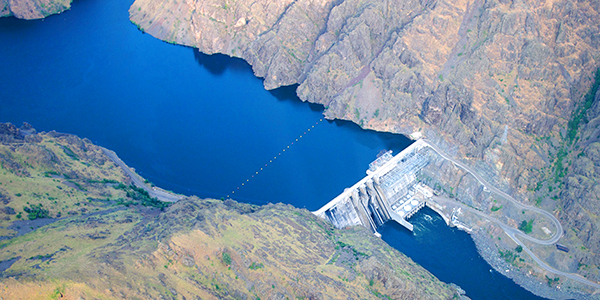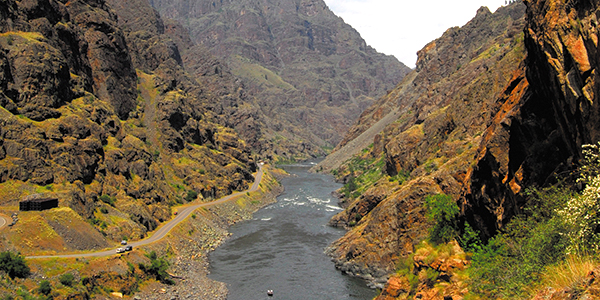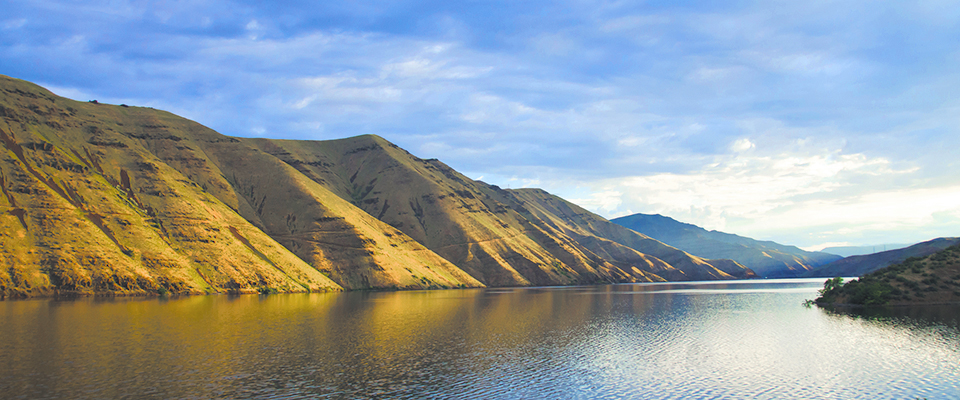Spotlight: Hells Canyon
Don’t let the name fool you—this is heaven for outdoors lovers
Hells Canyon. The name alone lights a fire in the imagination. Is it really and truly a landscape of precipitous peril and natural danger? Or is it simply an exaggeration, a relic from a bygone era of intrepid exploration?
Spend 10 minutes deep in the gullet of this mesmerizingly treacherous slice of the Snake River in southeastern Washington and you’ll have your answer: This is rough country, through and through. It’s considered so aggressively impassable, in fact, that in 1975 the U.S. Congress deemed 31.5 miles of the river from Hells Canyon Dam to Upper Pittsburg Landing as officially “wild.” It’s almost completely inaccessible by anything other than a river raft, so if your heart is set on exploring this scenic river ecosystem, buckle up and prepare for a wild ride.
The Lewis-Clark Valley in southeastern Washington is considered the Gateway to Hells Canyon, despite the fact that the canyon itself is largely found straddling the Oregon-Idaho border further south. The wilderness is so thick and impassable that tours and expeditions are organized in the sister cities of Lewiston and Clarkson, which sit at the confluence of the Snake and Clearwater rivers. From here, visitors can follow in the footsteps and paddle-strokes of some of history’s most daring explorers, including Lewis and Clark, who tried and failed to battle the raging rapids and bone-shattering rocks of Hells Canyon in the 19th century.

Samuel M Beebe
Today, many of the most dangerous rapids have been tamed by the damming of the river upstream from Hells Canyon, making a professionally guided tour of the river by jetboat, raft or kayak not only extremely enjoyable but also suitable for all ages.
As you set out on your journey down the Snake River and move closer to the stretch that comprises Hells Canyon, you’ll gradually begin to discover what the flow of water can accomplish if given 13 million years to get the job done. The Snake River has slowly but surely carved out the deepest gorge on the continent, with walls topping out at 8,000-foot peaks at the canyon’s highest point. Deeper, yes, than even the Grand Canyon.
If you’re exploring the Snake River and Hells Canyon by jetboat from Lewis-Clark Valley, your trip will be divided into two sections. The first section is considered the “scenic” section of the river.
Dotted along the banks, beaches and cavernous rock shelves of the canyon is evidence of the Snake River’s human history, from ancient Native American petroglyphs carved into the rock walls tens of thousands of years ago, to the ramshackle ruins of a bygone mining boom, which gripped the river from the 1860s to the 1920s. There are plenty of places to stop, have a picnic, take a hike or go fishing before carrying on upstream.
Most guided expeditions make a stop at Cache Creek Ranch in the Hells Canyon National Recreation Area. An on-site permanently staffed visitor center provides informative exhibits and a chance to recharge before setting off into the second section of the river—the “wild” section.
As you close in on Pittsburg Landing you’ll start to notice a change in the canyon walls and surrounding wilderness. The terrain begins to thicken and the walls begin to rise at a steeper grade, but this is only a taste of what’s to come. Be sure to stop at Pittsburg Landing for a break. This is one of the busier stops along the river due to it being one of the last full-service stops on the trip upstream to Hells Canyon Dam. It features a boat launch, campground, access to the northern reaches of Hells Canyon National Recreation Area and a 6-mile marked trail to Kirkwood Historic Ranch.

Art Bromage
Once you push off from the landing to complete the trip to Hells Canyon Dam you’ll be seeing Hells Canyon at its finest. From this point on, it’s just as easy to see how the Snake River got its name as it is to see how Hells Canyon acquired its own. The Snake has to twist—sharply, frequently and aggressively—in order to wind its way downstream through the choking gorge walls on either side.
The canyon’s deepest sections—Hat Point, Heavens Gate and Kinney Point—are found here. Before the construction of the dam, this is also where you would have found some of the most dangerous whitewater rapids in the world, the very same that turned Lewis and Clark back the other way, to search for an alternate route.
From tip to tail, this mesmerizing slice of the Snake River is a dream come true for adventure-seekers.
For More Information







